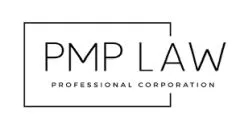The intersection between accident benefits claims and tort claims is a critical area of personal injury law, particularly for individuals navigating the aftermath of a motor vehicle accident. Understanding how these two types of claims interact can significantly impact the compensation and support an injured party receives. In this blog post, we'll explore the distinctions between accident benefits and tort claims, how they complement each other, and key considerations for claimants
What Are Accident Benefits Claims?
Accident benefits, often referred to as "no-fault" benefits, are a form of insurance coverage provided under most standard automobile insurance policies in jurisdictions like Ontario. These benefits are designed to provide immediate financial support to individuals injured in a motor vehicle accident, regardless of who was at fault. Accident benefits typically cover:
- Medical and rehabilitation expenses: Costs for treatments like physiotherapy, chiropractic care, or psychological counseling.
- Income replacement benefits: Compensation for lost income due to the inability to work.
- Attendant care benefits: Support for those requiring assistance with daily activities.
- Other benefits: Such as housekeeping, caregiver benefits, or funeral expenses.
The goal of accident benefits is to ensure timely access to necessary care and financial support without the need to prove fault, making them a critical lifeline for accident victims.
What Are Tort Claims?
In contrast, a tort claim is a legal action pursued against the party deemed responsible for causing the accident. Tort claims are fault-based and seek to compensate the injured party for damages not fully covered by accident benefits, such as:
- Pain and suffering: Compensation for physical and emotional distress caused by the accident.
- Future Treatment: Beyond what accident benefits provide, particularly for long-term or permanent disability
- Future loss of income: Beyond what accident benefits provide, particularly for long-term or permanent disability.
- Out-of-pocket expenses: Costs not covered by accident benefits, such as specialized medical equipment or travel expenses for treatment.
- Loss of enjoyment of life: Compensation for diminished quality of life or inability to engage in hobbies and activities.
Tort claims often involve litigation and require proving that the other party's negligence caused the accident and resulting injuries.
The Intersection of Accident Benefits and Tort Claims
- Coordination of Benefits: Accident benefits are considered the "first payer" for certain expenses, meaning they must be exhausted before pursuing those same expenses in a tort claim. For example, if your accident benefits cover $50,000 in medical expenses, you cannot claim those same expenses in a tort action. However, if your medical needs exceed the accident benefits limit, you may seek additional compensation through a tort claim.
- Deductibles and Thresholds In Ontario, tort claims for pain and suffering are subject to a statutory deductible or threshold. For instance, in Ontario, a claimant must prove that their injuries meet a "serious and permanent impairment" threshold to pursue non-pecuniary damages (e.g., pain and suffering) in a tort claim. Accident benefits, however, are not subject to such thresholds, providing immediate access to funds regardless of injury severity.
- Impact of Settlements Settling an accident benefits claim can impact a tort claim. For example, if you settle your accident benefits claim for a lump sum, the tort defendant may recieve a credit for certain benefits paid to avoid double recovery.
- Catastrophic Impairment Designations In cases of severe injury, a designation of "catastrophic impairment" can significantly increase the accident benefits available. This designation can also strengthen a tort claim by demonstrating the severity of the injuries, potentially leading to higher compensation for pain and suffering or future care costs.
- Time Limits and Deadlines Both accident benefits and tort claims have strict timelines. For accident benefits, claimants must notify their insurer within days of the accident and submit applications within specific periods. Tort claims typically have a longer limitation period (e.g., two years from the date of the accident), but delays in pursuing accident benefits can weaken a tort claim by limiting evidence of injury or treatment needs,
Considerations for Accident Victims
Navigating the intersection of these claims requires strategic planning to maximize recovery. Here are some tips:
- Document Everything: Keep detailed records of medical treatments, expenses, and communications with insurers. This documentation is critical for both accident benefits and tort claims.
- Seek Legal Advice Early: A personal injury lawyer can help coordinate both claims, ensuring you meet deadlines and avoid pitfalls like settling one claim prematurely.
- Understand Your Policy Limits: Review your auto insurance policy to know the extent of your accident benefits coverage, as optional benefits can significantly increase available funds.
- Leverage Medical Assessments: Independent medical assessments substantiate the severity of injuries in a tort claim.
Conclusion
Accident benefits and tort claims are two sides of the same coin in personal injury law, each playing a vital role in ensuring injured parties receive fair compensation. While accident benefits provide immediate, no-fault support, tort claims offer a pathway to recover additional damages from the at-fault party. Understanding how these claims interact and seeking professional legal guidance can make a significant difference in achieving a fair outcome.
If you've been injured in a motor vehicle accident, consult with an experienced personal injury lawyer to navigate the complexities of accident benefits and tort claims. Your recovery—both physical and financial—depends on it.
The content of this article is intended to provide a general guide to the subject matter. Specialist advice should be sought about your specific circumstances.


